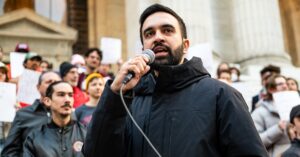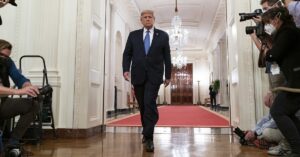Trump ends Syria sanctions after talks with controversial leader in Saudi Arabia
President Trump just dropped a bombshell by greenlighting the end of long-standing US sanctions on Syria, a move that’s got everyone from Riyadh to Washington buzzing with both hope and skepticism.
Following a pledge made last month during a visit to Saudi Arabia, Trump finalized the decision on Monday to lift these economic restrictions, aiming to bring Damascus back into the global trade and banking fold after 14 grueling years of civil war.
Let’s rewind to last month when Trump, at 79, was in Riyadh making big promises during a speech that earned him a standing ovation from regional leaders who’ve long opposed Iran-backed Bashar al-Assad.
Trump’s bold announcement in Riyadh
The day before meeting Syria’s new president, 42-year-old Ahmed al-Sharaa, Trump declared his intention to ease sanctions on the Damascus government, signaling a fresh start for a war-torn nation.
Those regional leaders clapping in Riyadh? They’ve poured resources into ousting Assad, now exiled in Russia, and they see this as a win, though some might wonder if the cure is riskier than the disease.
Then came the face-to-face on May 14 with al-Sharaa, a man with a past so checkered it could be a chessboard, yet Trump seems to think he’s got the grit to stabilize Syria.
Who is Ahmed al-Sharaa really?
Born in Riyadh to a Syrian businessman and raised in Damascus, al-Sharaa isn’t just any leader—he’s a former Al Qaeda fighter who battled US troops in Iraq starting in 2003 and later founded the Nusra Front, an Al Qaeda offshoot, in 2012.
He cut ties with Al Qaeda’s top brass in 2016 and has since tried to paint himself as a champion of Syria’s diverse religious fabric, but recent massacres of Alawites and Druze under his watch raise serious red flags.
Trump, never one to mince words, called him a “tough guy” with a “very strong past,” which is a polite way of saying his resume isn’t exactly choirboy material.
Trump’s take and Turkish ties
Speaking of al-Sharaa, Trump added, “He’s got a real shot at holding it together,” citing conversations with Turkish President Recep Tayyip Erdogan, who apparently sees potential in this controversial figure.
Trump also didn’t shy away from alleging that Erdogan used al-Sharaa’s fighters for what he called an “unfriendly takeover” of Syria last year—turns out, geopolitics is still a rough neighborhood.
While the sanctions on Damascus are history, Assad himself, along with his cronies, human rights violators, drug runners, chemical weapons actors, ISIS affiliates, and Iranian proxies, remain firmly in the US penalty box.
A chance for Syria or a risky gamble?
The goal here is clear: give Syria’s government a lifeline to reconnect with international systems, a move the State Department is framing as part of a broader vision for peace.
State Department spokeswoman Tammy Bruce said, “The interagency team… is actively executing the president’s bold vision for a stable, secure and peaceful Syria,” but let’s be real—bold visions don’t always mean smooth sailing.
This decision, while hopeful for a nation battered by conflict, hinges on a leader with a past tied to terror and a present marked by violence against minorities, leaving many to wonder if stability is just a mirage in the Syrian desert.




